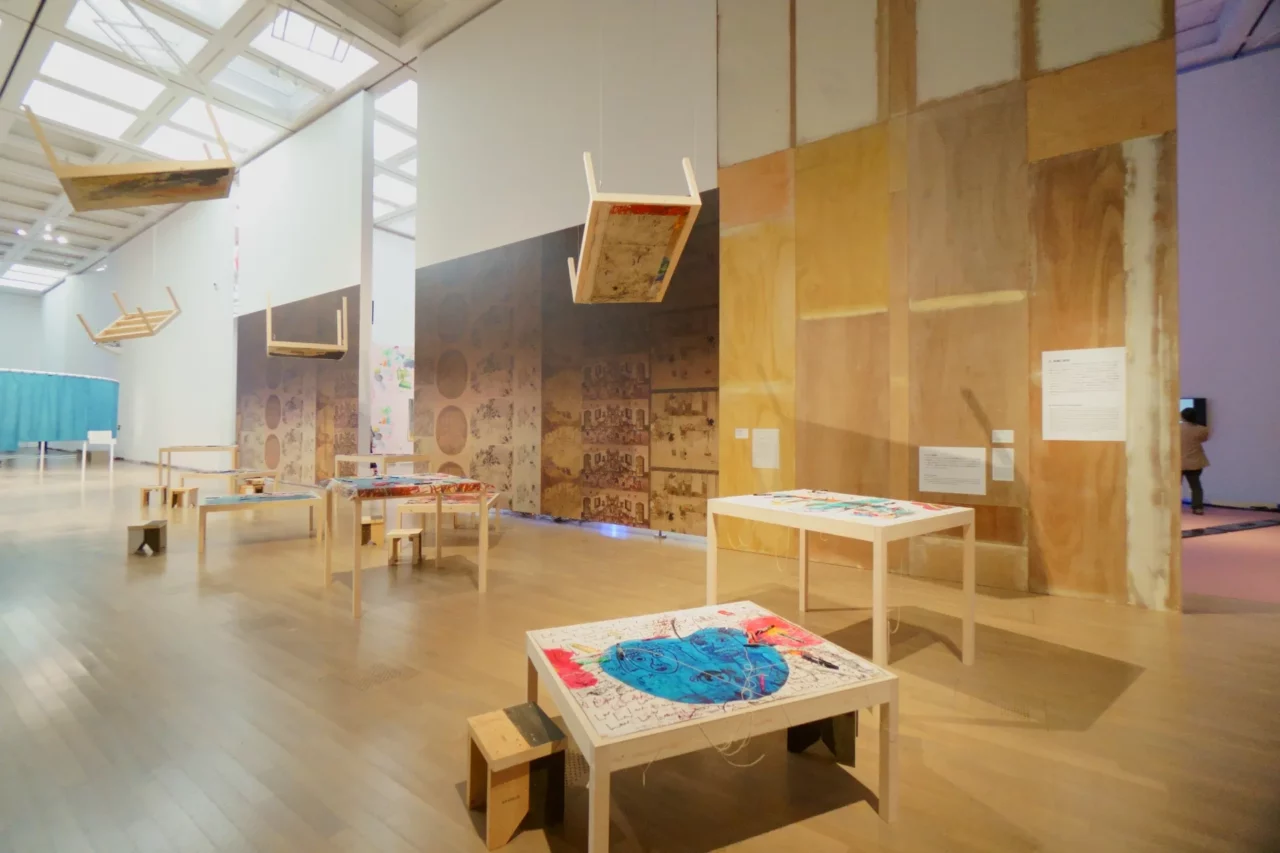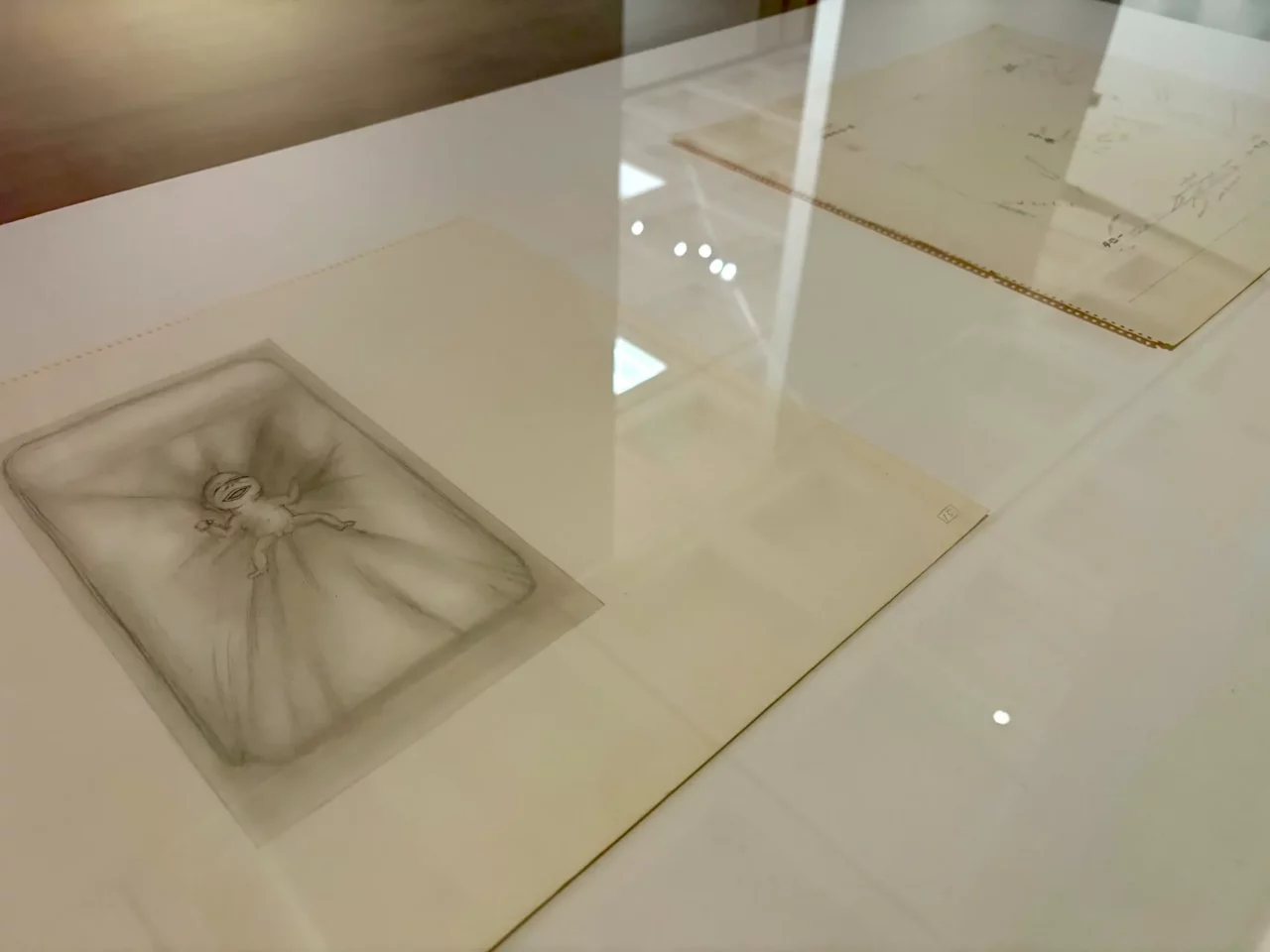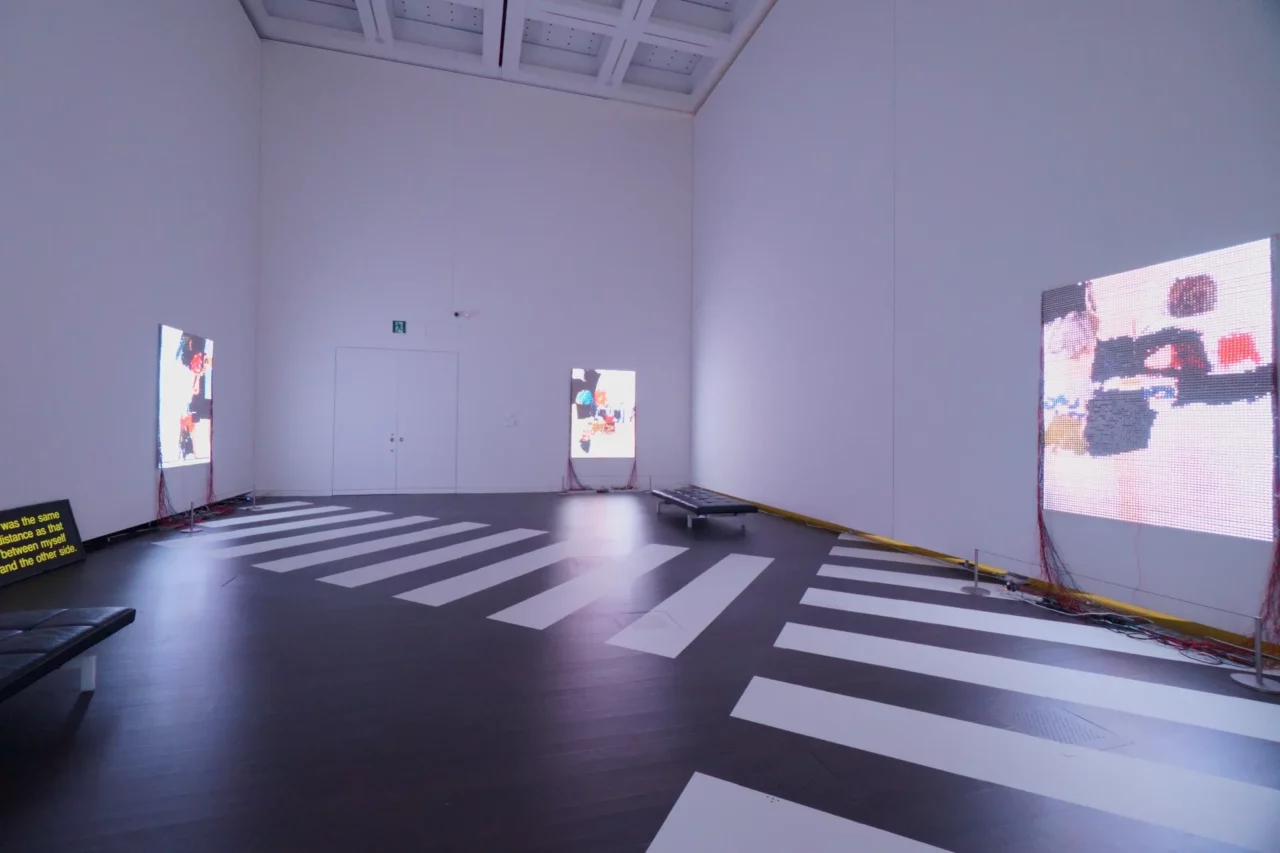INDEX
A Sneak Peek from Sections 6 to 9

In the “Painting and Education” section, there is once again a corner where visitors are encouraged to freely draw. This is Telegram to the People of Tokyo by Colombian artist Oscar Murillo. On wooden desks are canvases that children from Colombia freely drew on, which Murillo then added to. At this exhibition, visitors are invited to add their own drawings or messages, participating in a project where they “send it back like a letter.”

The “Painting and Passport” section, which focuses on Japanese immigrant artists, features many captivating works, including those by Yuki Katsura and Luis Nishizawa. Pictured is a drawing by On Kawara, depicting a newborn. Kawara, an artist based in New York, is known as a leading figure in conceptual art. Many visitors to art museums may have encountered his Date Paintings series, where only the date of creation is painted on small canvases. In this drawing, making its debut in Japan, a newborn is depicted with a wide, somewhat grotesque grin (or perhaps crying?), a mix of cuteness and a hint of the uncanny.

In Section 9, “Painting and Ballet,” there is a surreal space where a play, written as a prose poem by philosopher Masaya Chiba, is performed by voice actor Ayumu Murase, who plays four roles. The sound fills the room, creating a unique atmosphere. Unfortunately, due to the busy setting, I wasn’t able to catch all the words, but the sensation of hearing a painting suddenly speak was fascinating.
Finally, I want to mention a highly emotional and thought-provoking piece that might be easy to miss: Bruce Conner’s 1967 film White Rose. This documentary film captures the process of moving a massive painting, weighing one ton and measuring 3.2 meters in height, from the artist’s studio to the museum. The strong men attempting to transport the artwork evoke a strangely amusing scene, like something from The Enormous Turnip, while the separation between the artist and his work feels like a poignant love story. It’s a must-see.
























